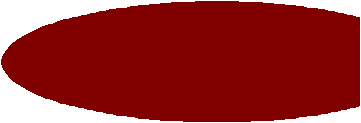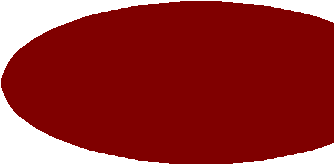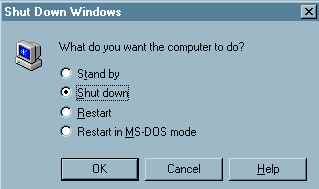Shut Down Options
|
|
The start button also contains the option to shut down your computer.
|
By clicking on the Start button and then on Shut Down you will be presented with four options. Like shown below.
|
|
|
|
|
|
|
|
|
|
|
|
|
|
|
The four options do not all shut down the computer, they do the following.
|
Standby = Puts the computer on standby until told there is some form of user interaction.
|
|
Shut Down = This option will shut down the computer and stop the session. Once shut down the computer will need to be turned back on via the front power switch.
|
|
Restart = This will restart the computer, this meaning it will start again, clearing the memory.
|
|
Restart in MS-DOS mode = This will restart the computer in MS-DOS mode or Microsoft Disk Operating System Mode. This is an old form of an operating system where commands are carried out by typing instructions onto a blank screen. Not to be used if you are a beginner.
|
|
Menus
|
|
Many of the windows you use and look at will have a menu bar near or at the top of the window, displaying the menu options relevant to a particular window. The most common menu configuration for a window is shown here.
|
|
|
|
|
|
|
|
|
|
If you simply click on a menu option you will reveal a drop down list of further options within it. As an example, we will look at the VIEW menu.
|
|
|
|
|
|
|
|
|
|
|
|
|
|
|
|
|
|
|
|
|
To deactivate an option with a tick next to it, click on it once. Then to activate it or another option click on it once.
|
|
If a particular option is dimmed out, it cannot be used at that particular time or it is not appropriate, this is not to say it can never be used, as a different set of circumstances may require you to use it.
|











